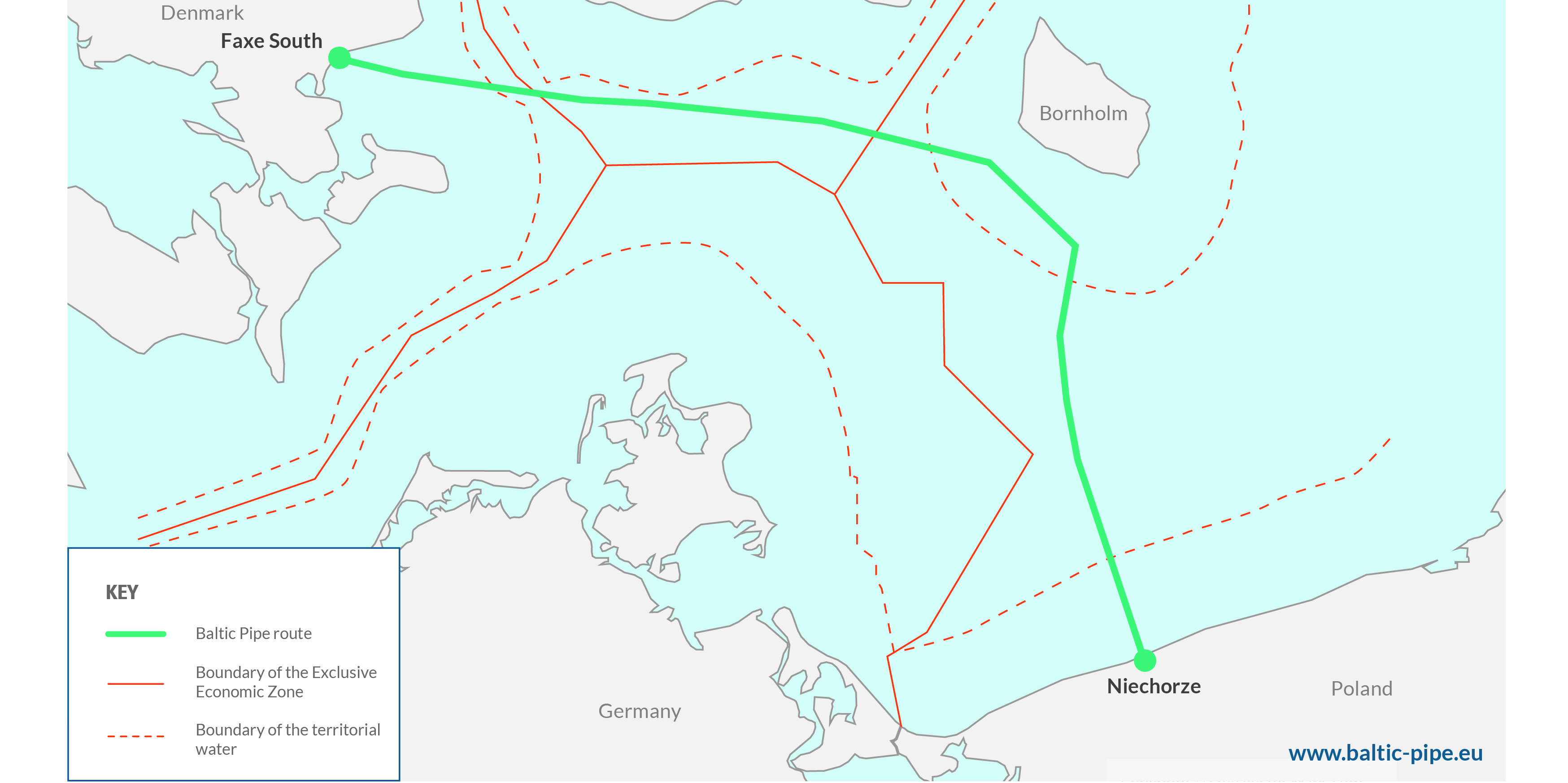Tydzień w gospodarce
Category: Raporty

(Baltic Pipe Project, Public domain)
The European Commission accepted the project on July 16th, 2018, under the aegis of the Connecting Europe Facility. The two operators: Gaz System and Energinet will act under the long winded title “Strengthening the gas supply systems in Poland and Denmark from the Baltic Pipe project”. The Connecting Europe initiative is important to the funding of infrastructure projects in transportation, energy and telecommunications.
The Baltic Pipe stages have been financed progressively from 2015, when the analysis started, to 2017, when, for the third time, it became a Project of Common Interest (PCI).
The route itself was confirmed earlier, in late June, and will run between Niechorze in Poland and Faxe South in Denmark, a total of 275 km, and will have a capacity of 10 billion cubic meters (bcm). This will ensure a secure gas supply from the Norwegian North Sea gas fields to Poland, lessening the dependence on Russian gas supply.
There were three possible routes: northern, central and southern. The first runs from Denmark close to Bornholm island and then to Poland. The central takes the pipeline, as the name implies, on a direct route from Denmark to the Polish coast. The southernmost route runs from Denmark, skirts German territorial waters, but goes through the Exclusive Economic Zone (EEZ), and then to Poland.
Each of these routes had topographical, ecological and environmental obstacles to overcome. There is a problem of balancing the needs of Baltic marine life, different levels of the actual sea bed, avoiding stocks of chemical munitions, and existing wind farm complexes. Finally, the northern route was chosen as the best compromise solution.
The Baltic is a very badly polluted sea and new construction may upset the ecological balance of marine life. This environmental aspect is especially important in Germany, Denmark and Sweden, more than in Poland. The northern route skirts round the Nature 2000 reserve that lies almost mid-way between Bornholm and Germany. The proximity to the shallow waters of Bornholm itself could be problematic when faced with progressing into deeper waters further on. The southern, German option, with its more constant sea bed, seemed to offer more attractive solutions in this respect. Thus incurring financial and ecological costs could be avoided. But the route would then have cut through the EEZ and German territorial waters.
Furthermore, vast stores of conventional and chemical munitions were dumped by the end of the Second World War in 1945. The Soviets dumped quantities of chemical ammunition around Bornholm, not being particular about the method of conservation or recording the location of the dumps. Despite this, the northern route manages to avoid other stocks of former East German chemical stocks dumped in the late 1950s.
Crossing Nord Stream and Nord Stream 2, the Russo-German pipelines under the Baltic with the latter progressing in construction, at some point may lead to difficulties with Russian or German investors and indeed with their respective governments.
The criss-crossing of already existing telecommunications cables underlines the invalidity of this idea, but nonetheless it may be used as a political weapon. The northern route avoids the crossing in German waters, however. It also avoids the Vikinger wind farm complex close to the German shore.
Polish energy portal, Energytka24 wrote that neither Denmark nor Poland have experience in building these vast projects, but the choice of the northern, Swedish route as opposed to the southern, German one, represents a better choice from the Polish point of view.
Earlier, there had been doubts as to the timetabling of the project. Piotr Naimski, the government plenipotentiary for strategic energy development, said in June that the project was on schedule. Polish tabloid media had reported that the project is facing delays, but Piotr Naimski denied this claim and allayed any fears. “There are no threats to the deadline. The Baltic Pipe project is being conducted without delays. A construction agreement will be signed by the end of this year and will be equal to a final investment decision,” he told the Polish press.
Speaking to Polish news portal wnp.pl he stated that the project is, in a political sense, priceless. He recognized, however, that the deadline was a tight one. Furthermore, the transit system on the Polish territory has to be constructed. There are over 25 investment projects linked to this side alone.
Mr. Naimski said that the Nord Stream 2 project will enable Russia to put more pressure on Ukraine. “Poland is playing chess with a very experienced and determined opponent, but then we are coming up to master status too,” he said.


